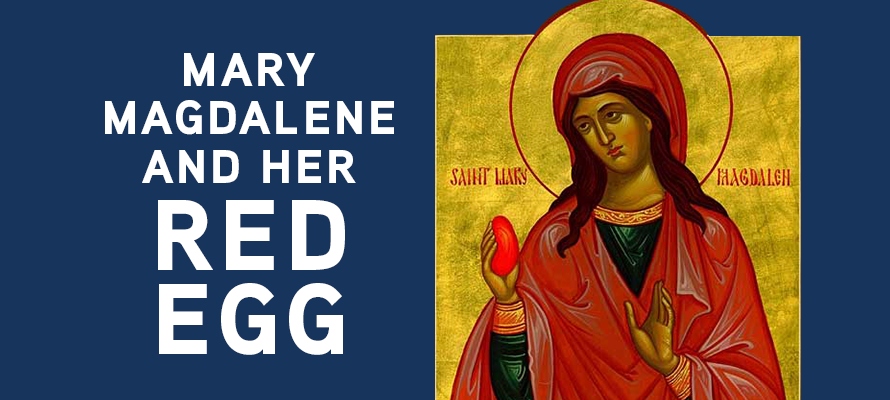
We all know the awe-inspiring story of Mary Magdalene, the first person Christ appeared to after his Resurrection. She was a true saint of hope running to tell the Apostles she had seen the Lord. They didn’t believe her until they ran to the tomb themselves.
The unbelief of the Apostles steeled her for a life of ministry to many who did not believe in Christ’s Resurrection. Her story didn’t end at the tomb of Jesus. She continued to witness to the Faith and Resurrection – and she did it with an egg. It’s part of the reason we use Easter eggs at Eastertime.
According to tradition, St. Mary Magdalene—who was a wealthy woman – gained an audience with the Emperor Tiberius in Rome after Christ’s Resurrection. Denouncing Pilate for the way he conducted himself at Christ’s trial, Mary told the Emperor about Christ and His Resurrection from the Dead.
Holding out an egg to him, she proclaimed “Christ is Risen!”
The Emperor was not impressed. He told St. Mary Magdalene that there was about as much chance of a human being returning to life from the dead as there was of the egg in her hand turning red.
The egg promptly turned red!
This is why many icons painted in the Byzantine Catholic style show Mary Magdalene holding a red egg. Even before the time of Christianity, eggs were a symbol of creation, spring, and rebirth. After the Resurrection of Christ, they took on deeper symbolic meaning. The sealed tomb of Christ was the uncracked egg. St. Augustine described Christ’s Resurrection from the dead as a chick bursting from an egg.
The Eastern Catholic Church to this day distributes red Easter eggs, and the tradition of sharing Easter eggs across the world stems directly from Mary Magdalene’s proclamation of Christ’s Resurrection to the Emperor and the miracle of the red egg.




